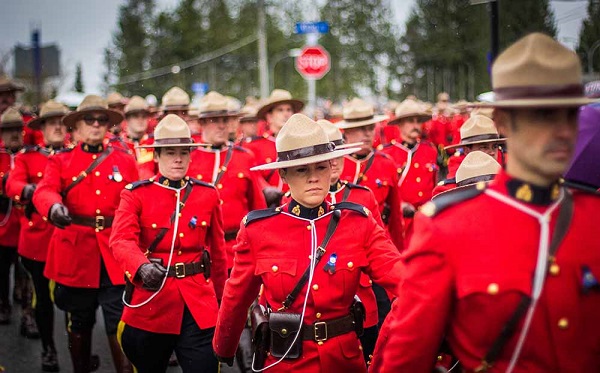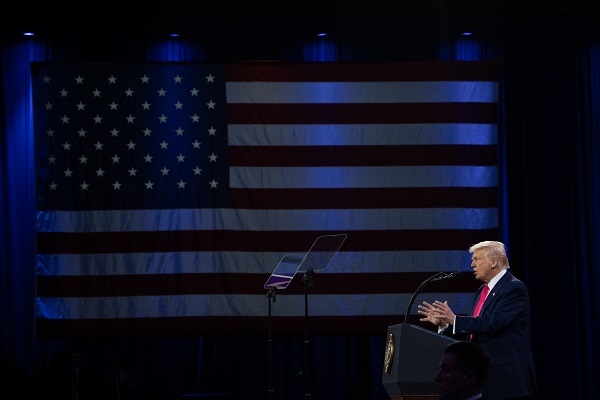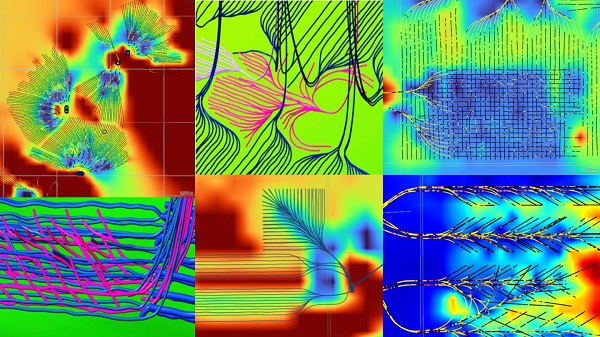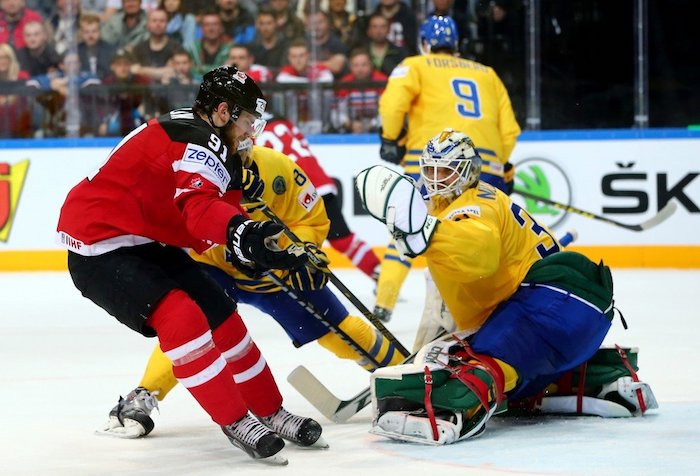Opinion
Turbans vs. Motorcycle Helmets. Religious Freedom vs Safety?

Should safety trump religious freedom?
That sensitive topic may need to be visited by our Alberta provincial government if it prepares to debate making turban-wearing Sikhs exempt from current motorcycle helmet laws. They will likely need to discuss exemptions for motorcycle riders and also side-car occupants. There are jurisdictions that have these exemptions. Sikhs are allowed to ride without a helmet in British Columbia and Manitoba.
Ontario, after serious study, decided not to allow turban-wearing Sikhs to ride a motorcycle without wearing a helmet, a decision the Canadian Sikh Association called “deeply” disappointing.
Premier Kathleen Wynne of Ontario had also struggled with striking the right balance between public safety and religious accommodation. A bill was brought to the Ontario legislature years ago requesting an exemption. After much thought and consultations it was not supported.
“After careful deliberation, we have determined that we will not grant this type of exemption as it would pose a road safety risk,” she wrote in a letter to the Canadian Sikh Association. “The association has been a strong advocate for an exemption and presented “compelling arguments,” Wynne wrote. “However, the Ontario government has carefully monitored, and considered, the soundness of accommodating your position, drawing on relevant academic research, key legal decisions, and consultations with caucus and the community.”
“Ultimately, the safety of Ontarians is my utmost priority, and I cannot justify setting that concern aside on this issue.” The same would be said in Alberta.
The mandatory helmet law is based on extensive research that shows the high risk of injury and death for motorcyclists who ride without a helmet. Mortality rates have gone down 30 per cent and head injury rates down 75 per cent in jurisdictions with such laws.
Courts have also found that Ontario’s law doesn’t infringe on the Charter of Rights and Freedoms or the Ontario Human Rights Code, so Alberta would not have to worry, then, if a court challenge was to be launched.
So should safety trump religious freedom? That is a tough one, but so is the rights of individuals as a whole. There is a fine line between the wishes of the few versus the needs of the community.
The turban issue is also complicated by it’s history and it’s geographical relevance. If the turban can be altered to identify nobility, carry small weapons and for various castes and events, why could it not be altered for safety measures.
I found this information on the internet’s wikipedia: All Sikh Gurus since Guru Nanak have worn turbans. However, covering one’s hair with a turban was made an official policy by Guru Gobind Singh, the tenth Guru of the Sikhs. The main reasons to wear turban are to take care of the hair, promote equality, and preserve the Sikh identity. Sikh women may wear a turban if they wish.
Sikhs do not cut their hair, as a religious observance. The turban protects the hair and keeps it clean. As Sikhs only form 2% of India’s population, their turbans help identify them, also. When he institutionalized the turban as a part of the Sikh identity, Guru Gobind Singh said, “My Sikh will be recognized among millions.”
If a turban was institutionalized as a personal hygiene measure and as an identification and recognition factor then it should allowed to be covered temporarily for safety factors, but I am not an expert, but just as a questioner.
How our current provincial government deals with this issue could set off some debate beyond the rights of religious rights. How about human rights? Should I be ordered to wear a helmet because I am not of a certain religion?
There will be discussion about allowing the exemption on smaller highways and urban streets, but a head injury at 60 km/h is still severe. An exemption to an exemption, would make less sense. If they wear a helmet on Hwy 2 then they can wear a helmet on residential streets.
If the facts bear out that helmets do not prevent or lessen head injuries and mortality rates then do away with mandatory helmet laws. But if the facts show they do prevent or lessen head injuries and mortality rates then no exemptions.
That is just my thoughts.
Great Reset
EXCLUSIVE: The Nova Scotia RCMP Veterans’ Association IS TARGETING VETERANS with Euthanasia

I just received an email from a retired member of the RCMP…
“I served for 32 years on the West Coast and retired in 2019. As a Christian and a retired member of the RCMP I wanted to share this with you. I’m trying to wrap my head around this shocking email. I’m shocked it’s come to this.” – L.K
SATURDAY, NOV. 22, 2025
1:30-3:00 PM CHURCH HALL, OLD SACKVILLE ROAD, MIDDLE SACVILLE, NS, B4E 1R3.
On November 20th, an email quietly dropped into the inboxes of Nova Scotia RCMP veterans. Standard, polite and in true Canadian fashion formal and sanitized. This was no mistake, this wasn’t information. This was something different.
This was grooming.
Yes I said it, coercion.
The “opportunity” was a “Medical Assistance in Dying (MAID) Program in Nova Scotia”
This is a state-aligned institutions normalizing death as a service to the very people they already failed to support in life .This was a information session, to “educate” veterans who’s rates of PTSD and suicidality were already sky hight. How they can apply or use MAID.
The invited speaker?
Dr. Gordon Gubitz
Location? None other than a place of worship, a church hall. The target audience?
VETERANS.
This is what I’ve been talking about, welcome to the soft-coercive stage of Canada’s MAID regime.
Let’s meet Dr. Gordon Gubitz. The same Dr. Gubitz whois a MAID assessor and provider (killer) is the Clinical Lead for MAID in Nova Scotia, which means MAID is his not only his passion but spends his work focused on ending lives. This “Dr” sits on the board of CAMAP, the pro death organization that creates all the pathways for Canadians to be killed while manipulating the court systems in their favour. More death to them is the goal. This “Dr” helped write the national MAID curriculum and trains doctors on how to present MAID as a “care option.” This guy is literally a death pusher and peddler of the dark.
Think of him a the drug dealer for death.
They didn’t invite a trauma specialist.
They didn’t invite a palliative expert.
They didn’t invite a police mental-health advocate.
They didn’t invite a mental health expert
They didn’t invite a Dr who looks at psychedelic assisted therapy
They didn’t invite hope. They only invited death.
Kelsi Sheren is a reader-supported publication.
To receive new posts and support my work, consider becoming a free or paid subscriber.
Nova Scotia RCMP veterans invited a man whose job is to facilitate, provide and promote nothing but death, and whose organization teaches clinicians how to introduce MAID (assisted SUICIDE) to patients who didn’t ask for it, bring it up or want it in their life.
Let me explain something, If you’re a veteran dealing with PTSD, chronic pain, TBI, disability, or bureaucracy-induced despair, this isn’t “education.”
This is targeted psychological pressure.
Coercion, CAMAP and Dying with Dignity’s claim to fame.
No one will say the words out loud. No one will write “we think some of you should consider dying.”
They don’t need to, when just dangling the carrot is good enough to get the job done.
Coercion today is subtle, normalized in the community. It’s dressed up like Christmas cookies in a church call, framed as loving “support” being held by one of the most prolific death pushers in the game.
Simply funnelling veterans into the system one “information session” at a time. Like cattle through the gates of hell, with CAMAP waiting in the shadows. This time not with a bold gun. They would see that as “too humane”, but with a pen, check list, a needle and a paralytic.
Canada already proved it’s willing to dangle MAID (assisted suicide, murder, early death) in front of struggling veterans. I helped break these stories and bring our veterans stories to the masses. I’m interviewing more by the day, who’ve been offered death over life illegally.
VAC employees got caught offering MAID to veterans who never asked for it, including one trying to get a wheelchair ramp, my friend Christine.
So do me a favour spare us the “this is innocent” act.
Veterans have been coerced before, and it’s happening again right in front of your faces. Now the RCMP Veterans’ Association is rolling out the red carpet for the prevailers of death. The dark ones who feed on the souls of those who couldn’t bare to take another breath.
This is not an “opportunity.”
This is a sales pitch.
And the product is your death.
People keep asking me why veterans are being targeting? Because they’re the perfect targets, don’t you see?
Kelsi Sheren is a reader-supported publication.
To receive new posts and support my work, consider becoming a free or paid subscriber.
Veterans, on the daily are dealing with chronic pain, combat trauma, moral injury, sanctuary trauma, disability, suicidality, lack of services, financial strain, bureaucratic obstruction and the government doesn’t just know know it, it caused it and it supports it and so do the MAID, pro death cult architects.
The MAID lobby knows veterans are “high-yield” candidates, and not because they want to die, but because the system has already worn them down, like water slowly dripping over the rocks. The Liberal government just cut OVER 4 BILLION in care for veterans. Veterans aren’t being shown the full picture, they aren’t given any hope. They’re being shown the early exit. What we call in some circles, being shown the path to “self-selection.”
This RCMP veterans email is a soft-touch version of coercion if I’ve ever seen one.
“We’re not telling you to choose MAID… we’re just putting the idea on the table, in a friendly community space, with a trusted expert who helps design the national MAID system.” Who’s job is to provide you with all the pathways to wanting to kill yourself.
That’s how you manipulate a vulnerable population without leaving fingerprints.
Dr. Gubitz isn’t neutral. He is the system.
Gubitz isn’t walking into that church as an independent medical educator.
He is walking in as the clinical gatekeeper for MAID in Nova Scotia, IE. HELL. He’s nothing more than one of the ideological engines behind national MAID training. A CAMAP insider, the organization pushing to expand and normalize MAID (assisted SUICIDE) at every level of “healthcare,” if you can even call it that anymore. CAMAP literally publishes guidance on how clinicians should bring up MAID as a care option. Not reactively. Proactively.
When you pair a vulnerable group with a man trained to present MAID as “equitable access,” your “information session” becomes a recruitment funnel.
HOW IS EVERYONE OK WITH THIS?
You are directly influencing and priming veterans for death under the banner of “support.” It’s an illusion, it’s predatory behaviour! It’s not informed consent in any way. It’s manipulation.
And holding it in a church? That’s strategic psychological laundering.
Churches are trusted spaces. They lower defences, help you to open your mind. Churches to most signal moral legitimacy so hosting a MAID talk in a church hall tells veterans “your community approves. Your faith approves this is acceptable, this is dignified, you don’t have to fight or feel guilty, ”
It cloaks a controversial, ethically fraught practice in community warmth. It’s taking advantage of the safety and sanctity of church.
That’s not an accident.
It’s a tactic.
This wreaks of propaganda wrapped in hospitality.
This is the playbook of a system that wants to solve suffering by eliminating the sufferer.
Canada won’t fix the care gaps. It won’t fix the mental-health crisis. It won’t fix VAC’s failures and it sure as hell won’t fix disability supports.
But it will happily fund a national MAID curriculum, expand eligibility, remove guardrails, and now apparently send MAID providers on a tour of vulnerable communities.
Veterans have always been canaries in Canada’s moral coal mine.
If the state can normalize MAID to the people who wore its uniform, it can normalize it to anyone. And that’s the point.
This story isn’t about one email. It’s about a culture shift engineered from the top down.
This is how you create acceptance – – >
First, make MAID look compassionate.
Then, bring it into community spaces.
Then, present to vulnerable groups.
Then, call it “support.”
Then, remove the stigma.
Then, remove the safeguards.
Then, expand eligibility.
Then, tell the public: “People are choosing MAID because it’s dignified.”
They leave out the part where the system helped manufacture despair.
Veterans deserve better than an invitation to die.
They deserve care, treatment, advocacy, and someone who doesn’t treat their suffering as a problem to be erased.
Not a church basement with coffee and a state-aligned MAID architect explaining their “options.”
This email isn’t benign.
It is a warning, one Canada should have heeded years ago.
If the country is comfortable offering death to the people who served it, it’s comfortable offering it to anyone.
And that’s exactly what’s happening.
Please feel free to call or email them and let them know how this makes you feel.
KELSI SHEREN
– – – – – – – – – – – – –
One Time Donation! – Paypal – https://paypal.me/
Buy me a coffee! – https://buymeacoffee.com/
Youtube – https://www.youtube.com/@
Substack: https://substack.com/@
TikTok – https://x.com/KelsiBurns
Listen on Spotify:
|
|
The Kelsi Sheren Perspective
Kelsi Sheren Podcast |
SUPPORT OUR SPONSORS
– – – – – – – – – – – –
Ketone IQ- 30% off with code KELSI – https://ketone.com/KELSI
Good Livin – 20% off with code KELSI – https://www.itsgoodlivin.com/?
Brass & Unity – 20% off with code UNITY – http://brassandunity.com
Kelsi Sheren is a reader-supported publication.
To receive new posts and support my work, consider becoming a free or paid subscriber.
Daily Caller
Spreading Sedition? Media Defends Democrats Calling On Soldiers And Officers To Defy Chain Of Command


From the Daily Caller News Foundation
White House press secretary Karoline Leavitt was confronted on Thursday about President Donald Trump stating that the Democrats who called on the military to defy his orders committed crimes “punishable by death.”
In two Truth Social posts on Thursday, Trump accused the six Democratic lawmakers who called on military members to “ignore illegal orders” of committing “seditious behavior” that potentially could be “punishable by death.” In response, Leavitt immediately started criticizing the lawmakers who “conspired” to encourage military members to defy the president and potentially put themselves in harm’s way.
“You have sitting members of the United States Congress, who conspired together to orchestrate a video message to members of the United States military, to active duty service members, to members of the national security apparatus, encouraging them to defy the president’s lawful orders. The sanctity of our military rests on the chain of command, and if that chain of command is broken, it can lead to people getting killed, it that’s what these members of Congress, who swore an oath to abide by the Constitution, are essentially encouraging,” Leavitt said.
“We have 1.3 active duty service members in this country, and if they hear this radical message from sitting members of Congress, that could inspire chaos, and it could incite violence, and it certainly could disrupt the chain of command,” Leavitt continued.
WATCH:
Democratic Michigan Sen. Elissa Slotkin released the viral video on Tuesday, which included Democratic Arizona Sen. Mark Kelly and Democratic Pennsylvania Rep. Chris Deluzio, in which they accused Trump of of “pitting” service members and intelligence community officials “against American citizens” and of violating the U.S. Constitution. The six lawmakers all previously served in the military or intelligence community.
The press secretary added that their actions may be “punishable by law” given that Trump has never given any unlawful orders.
“That is a very, very dangerous message, and it perhaps is punishable by law. I’m not a lawyer … They are literally saying to 1.3 million active duty service members not to defy the chain of command, not to follow lawful orders. But they’re suggesting, they’re suggesting, Nancy, that the president has given illegal orders, which he has not. Every single order that is given to this United States military by this commander in chief and through this chain of command, through the Secretary of War, is lawful,” Leavitt said.
The lawmakers issued a joint statement stating that Trump believes they should be put to death for swearing to “protect and defend the Constitution.”
“What’s most telling is that the President considers it punishable by death for us to restate the law,” the statement read. “Our servicemembers should know that we have their backs as they fulfill their oath to the Constitution and obligation to follow only lawful orders. It is not only the right thing to do, but also our duty. “But this isn’t about any one of us. This isn’t about politics. This is about who we are as Americans. Every American must unite and condemn the President’s calls for our murder and political violence. This is a time for moral clarity.”
“In these moments, fear is contagious, but so is courage. We will continue to lead and will not be intimidated. “Don’t Give Up the Ship!” the statement concluded.
Article II, Section 2 of the Constitution states that the president is the commander-in-chief of the armed forces. The president is also in charge of intelligence agencies such as the FBI and CIA since he is the head of the executive branch.
In response to the video, Secretary of War Pete Hegseth stated that they have “Stage 4 [Trump Derangement Syndrome].”
-

 Alberta2 days ago
Alberta2 days agoAlberta on right path to better health care
-

 Alberta2 days ago
Alberta2 days agoCarney government’s anti-oil sentiment no longer in doubt
-

 Alberta2 days ago
Alberta2 days agoAlberta Emergency Alert test – Wednesday at 1:55 PM
-

 Alberta1 day ago
Alberta1 day ago‘Weird and wonderful’ wells are boosting oil production in Alberta and Saskatchewan
-

 Business1 day ago
Business1 day agoCanada is failing dismally at our climate goals. We’re also ruining our economy.
-

 Health2 days ago
Health2 days agoSPARC Kindness Tree: A Growing Tradition in Capstone
-

 Alberta1 day ago
Alberta1 day agoAlberta to protect three pro-family laws by invoking notwithstanding clause
-

 Crime2 days ago
Crime2 days ago‘Modern-Day Escobar’: U.S. Says Former Canadian Olympian Ran Cocaine Pipeline with Cartel Protection and a Corrupt Toronto Lawyer










